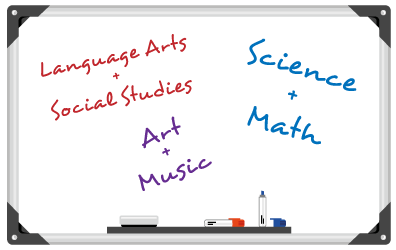 Some of your former secondary professors provided suggestions on content areas that would connect well with their content areas. Here’s what they had to say:
Some of your former secondary professors provided suggestions on content areas that would connect well with their content areas. Here’s what they had to say:
Cyndi Kuhn (Technology) – “Art and music.”
Dr. Brad Burenheide (Secondary Social Studies) – “Language arts/social studies is a natural fit!”
Dr. Todd Goodson (Secondary English, Speech/Theatre, Journalism)—“Any content can collaborate with any other content, and any grade level can collaborate with any other grade level. The most important thing in a successful collaboration is the quality and the nature of the professional relationship of the teachers leading the project. Bright, enthusiastic teachers who reinforce each other’s creativity can help their students see powerful connections across contents and ways of thinking. On the other hand, forced collaboration between teachers who have no desire to work together usually doesn’t end well for anyone. Our best colleagues are those who make us better, as teachers and as people. When you encounter those individuals, look for ways to collaborate so your students can see how we make connections across all disciplines.”
Dr. Sherri Martinie (Secondary Math) – “Science.”
Dr. Vicki Sherbert (Secondary English/Language Arts, Speech/Theatre, Journalism) – “English/Language Arts, Speech/Theatre, and Journalism present wonderful opportunities to collaborate in all content areas. Often there are topics covered in Social Studies classes to which literary works can be paired so that students are immersed in stories that bring historical events to life. There are also more and more non-fiction texts that can be read in the ELA classroom that support science topics and inquiry processes.”
Dr. Phillip Payne (Music Education) – “ All the subjects… specifically – Visual Art, History, Language Arts, Math. These all allow for great integration projects within courses.”
Dr. Tonnie Martinez (Secondary Language Arts) – “American Literature and American History; World History and World Literature.”
Dr. Sally Yahnke (Family and Consumer Sciences) – “I would encourage my students to collaborate with as many content areas as possible. I think supporting the content areas through family and consumer sciences is important for students to realize the relevance of the core classes in everyday life. Math just doesn’t happen in the math room or science in the science lab, but it is incorporated into what we do on a day-to-day basis. I think by working together, we can all help students succeed.”